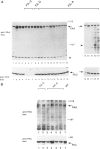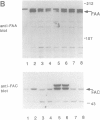Abstract
Fanconi anemia (FA) is an autosomal recessive cancer susceptibility syndrome with at least eight complementation groups (A-H). Two of the FA genes (FAA and FAC) have been cloned, and mutations in these genes account for approximately 80% of FA patients. Subtyping of FA patients is an important first step toward identifying candidates for FA gene therapy. In the current study, we analyzed a reference group of 26 FA patients of known subtype. Most of the patients (18/26) were confirmed as either type A or type C by immunoblot analysis with anti-FAA and anti-FAC antisera. In order to resolve the subtype of the remaining patients, we generated retroviral constructs expressing FAA and FAC for transduction of FA cell lines (pMMP-FAA and pMMP-FAC). The pMMP-FAA construct specifically complemented the abnormal phenotype of cell lines from FA-A patients, while pMMP-FAC complemented FA-C cells. In summary, the combination of immunoblot analysis and retroviral-mediated phenotypic correction of FA cells allows a rapid method of FA subtyping.
Full text
PDF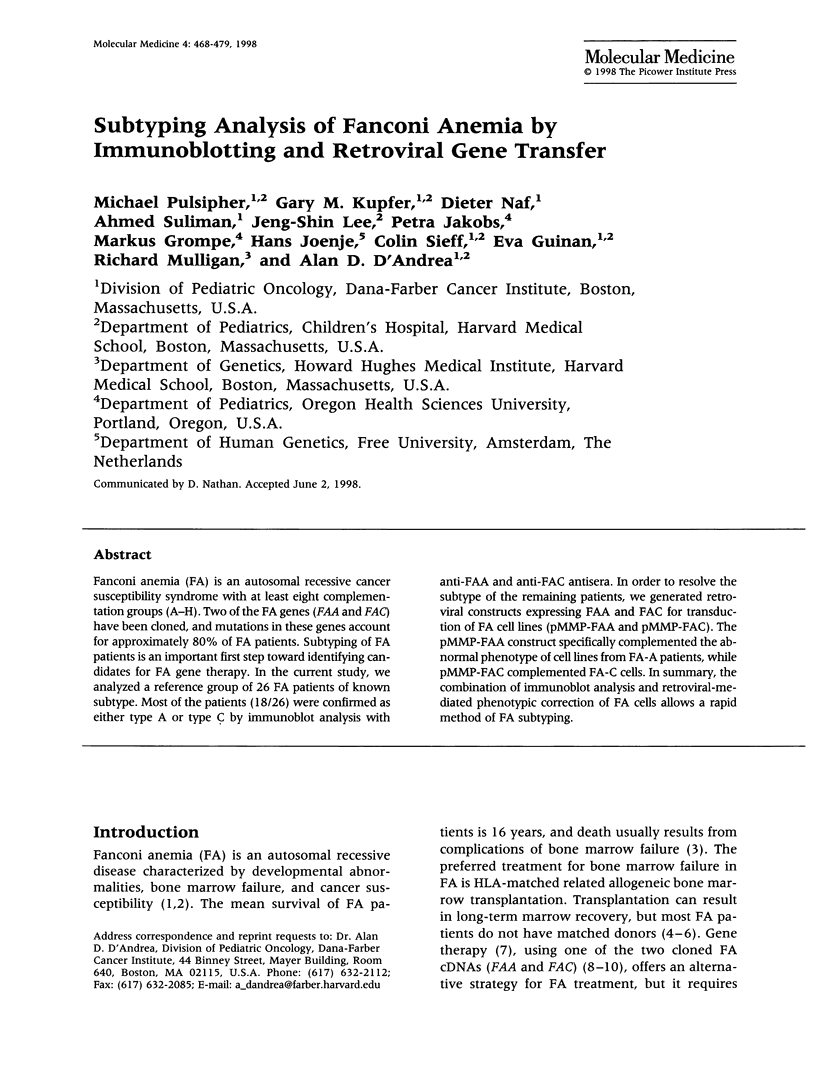
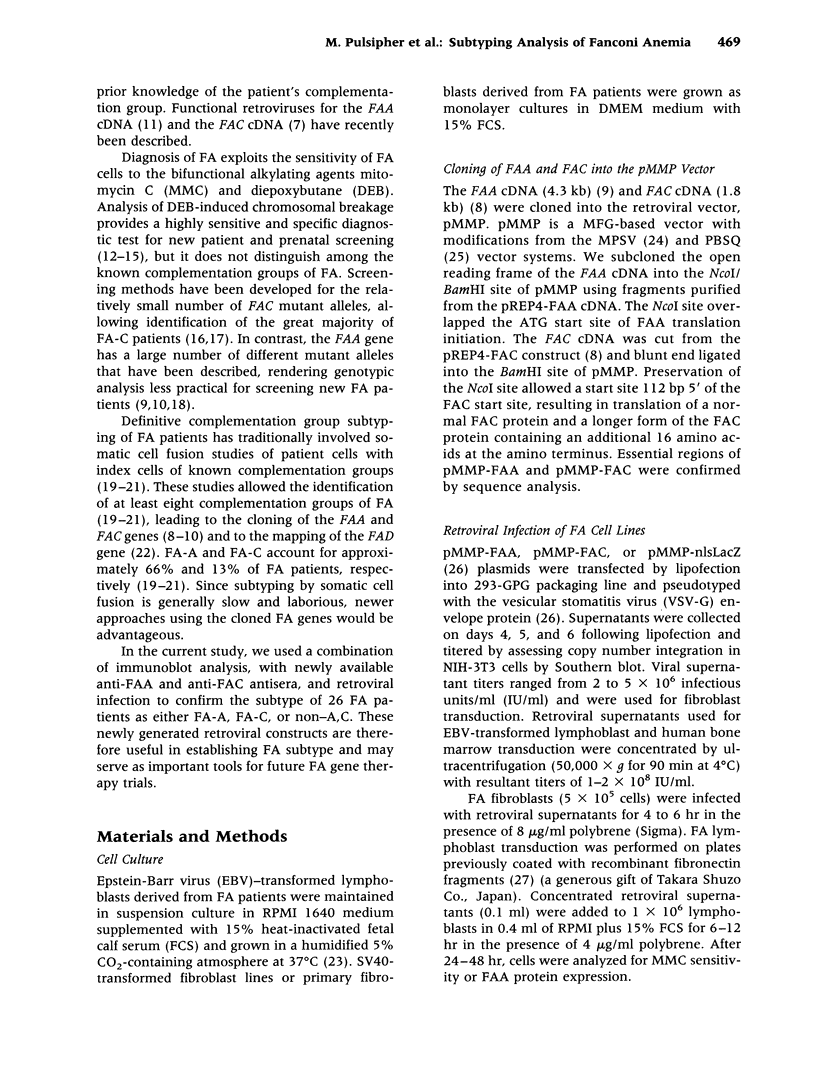
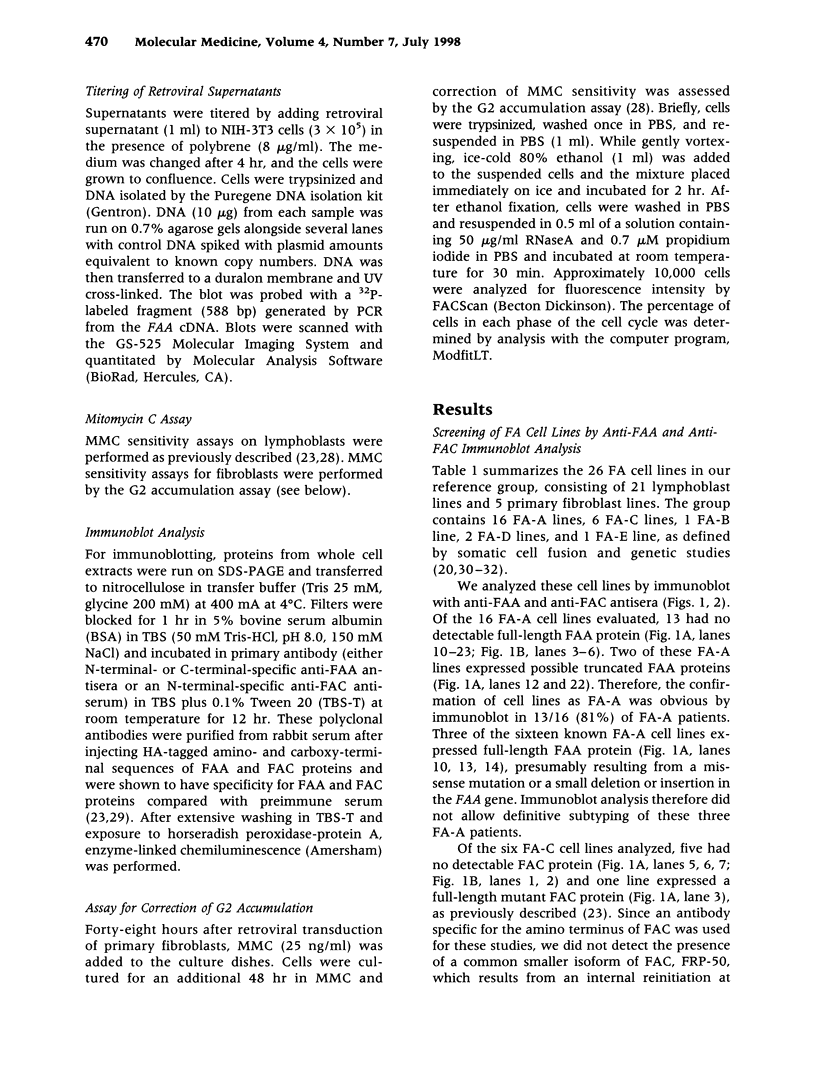
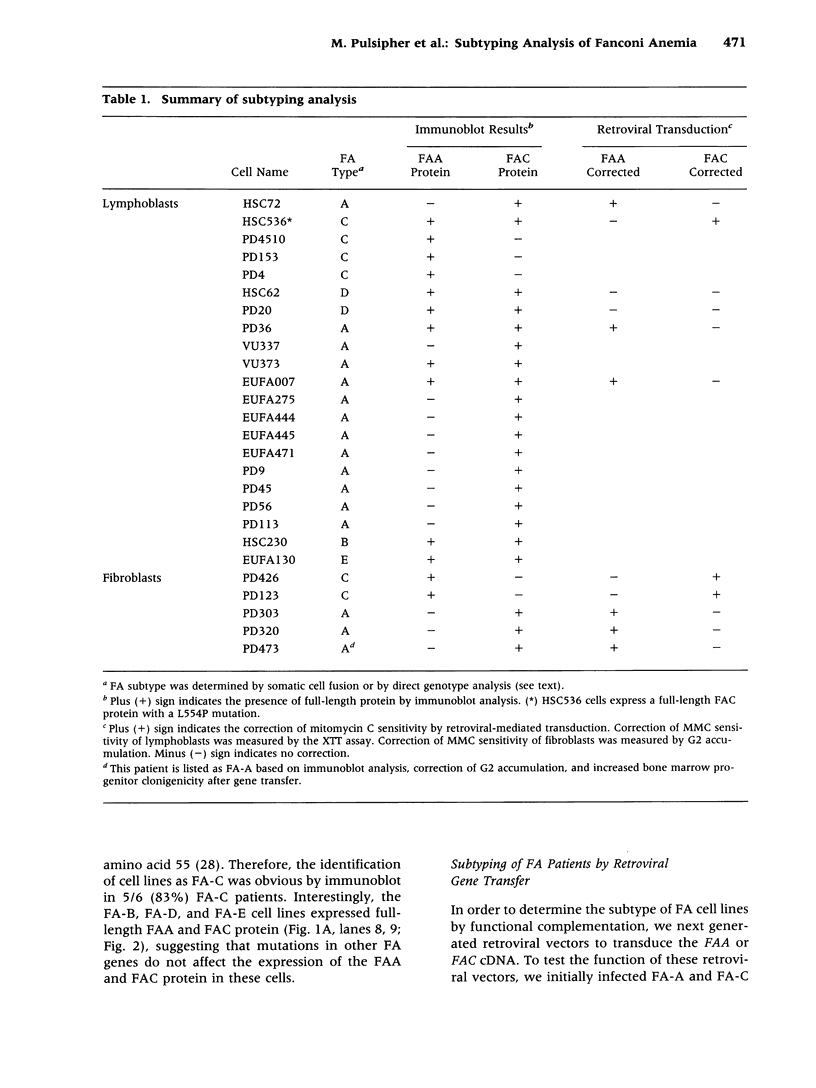
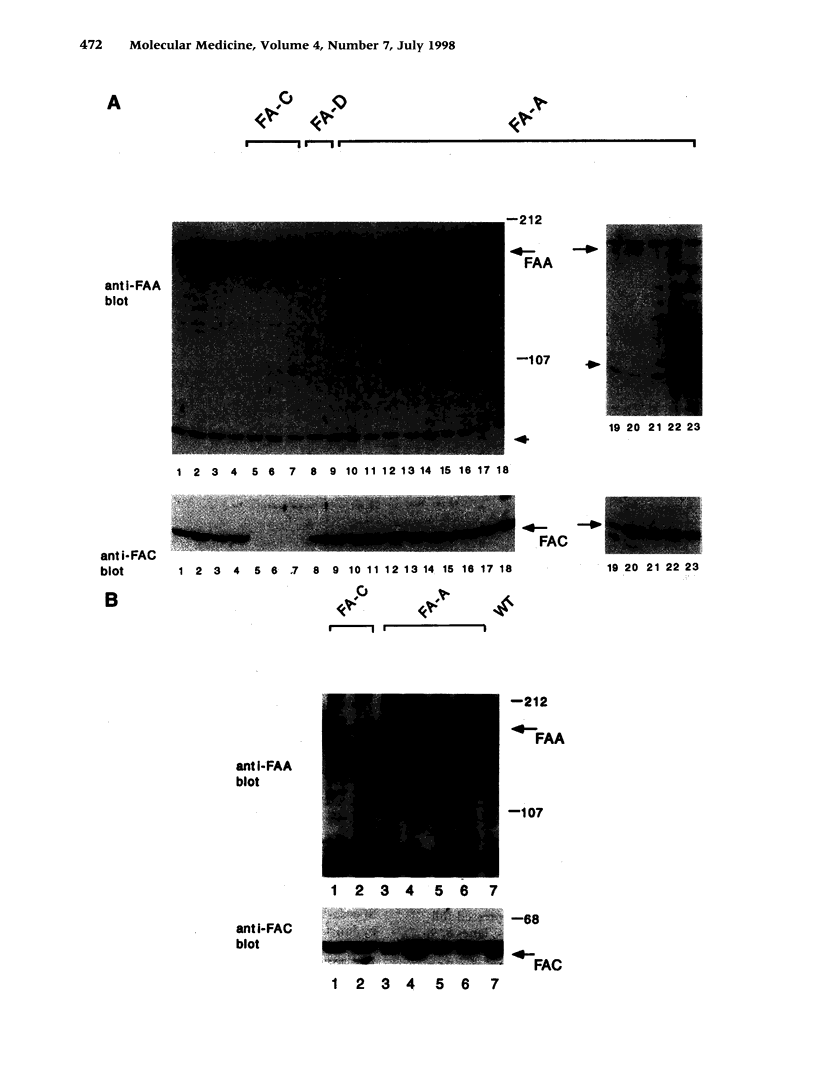
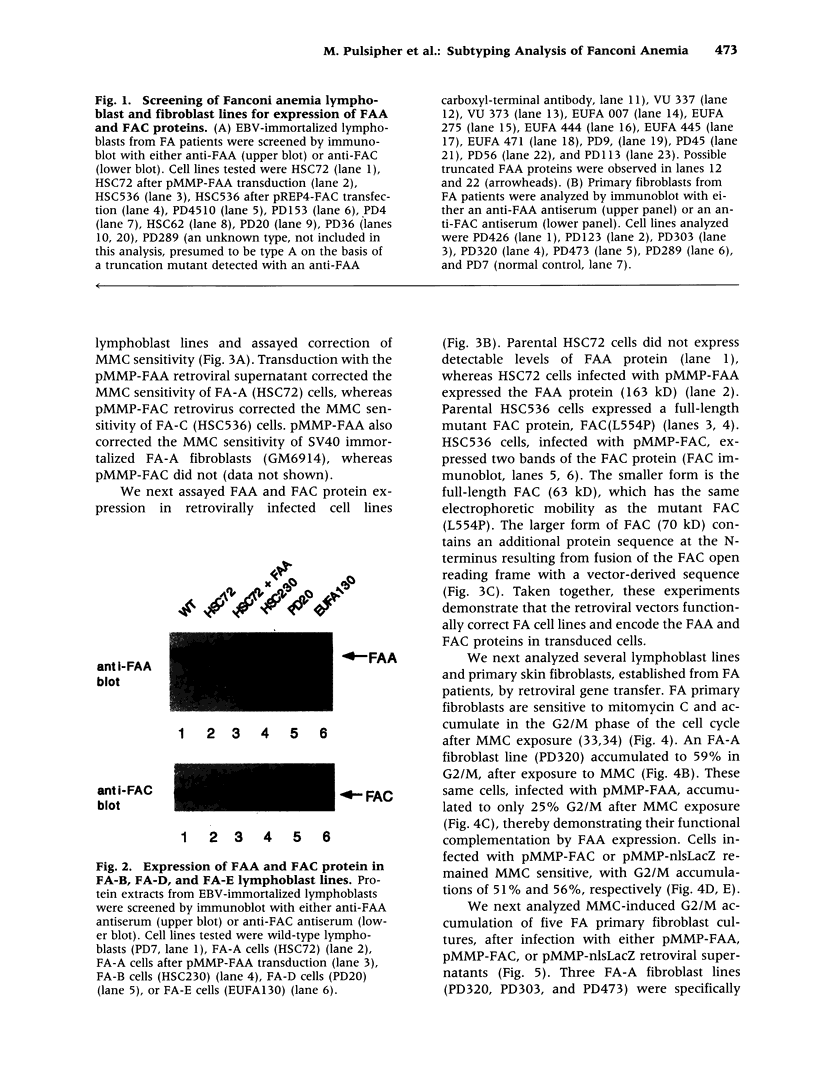
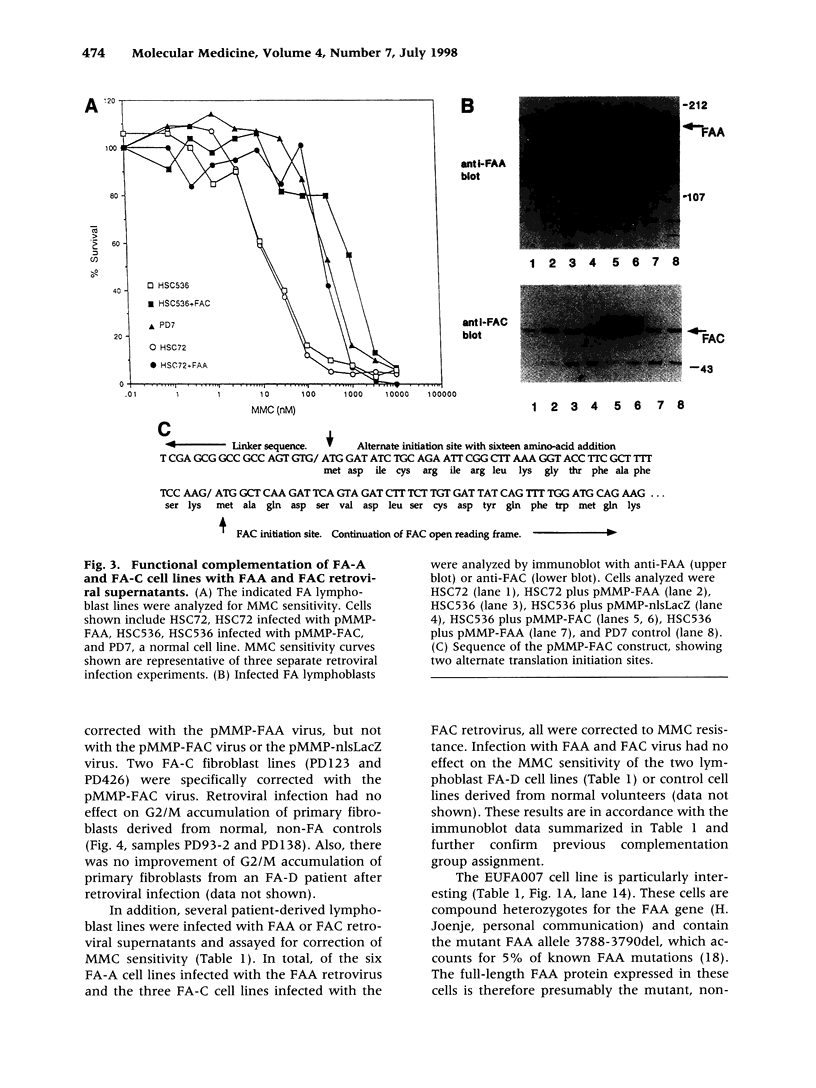
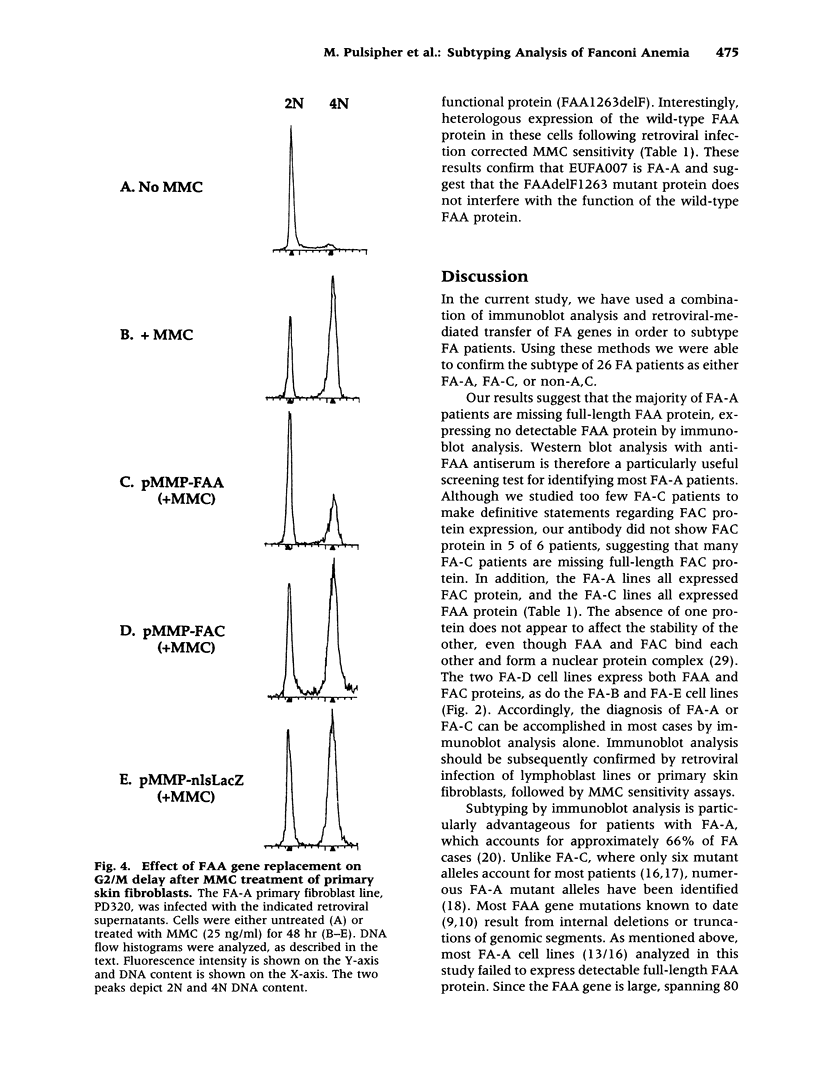
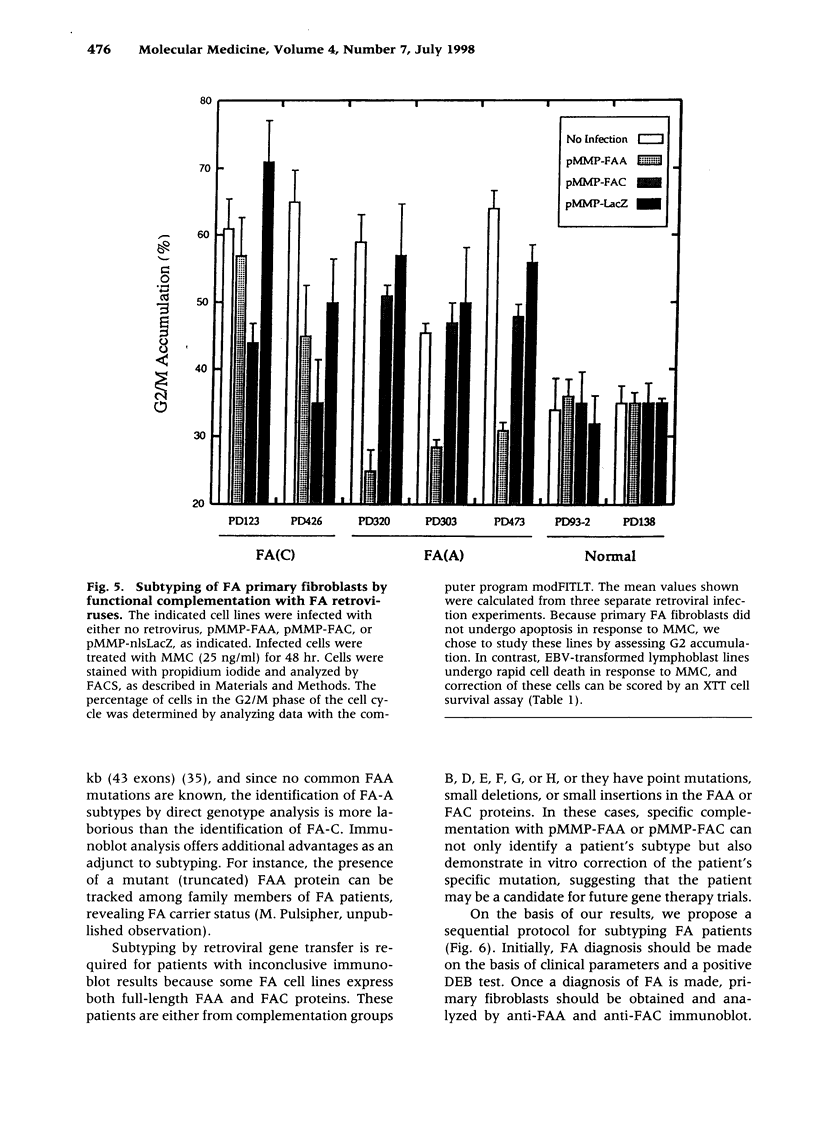
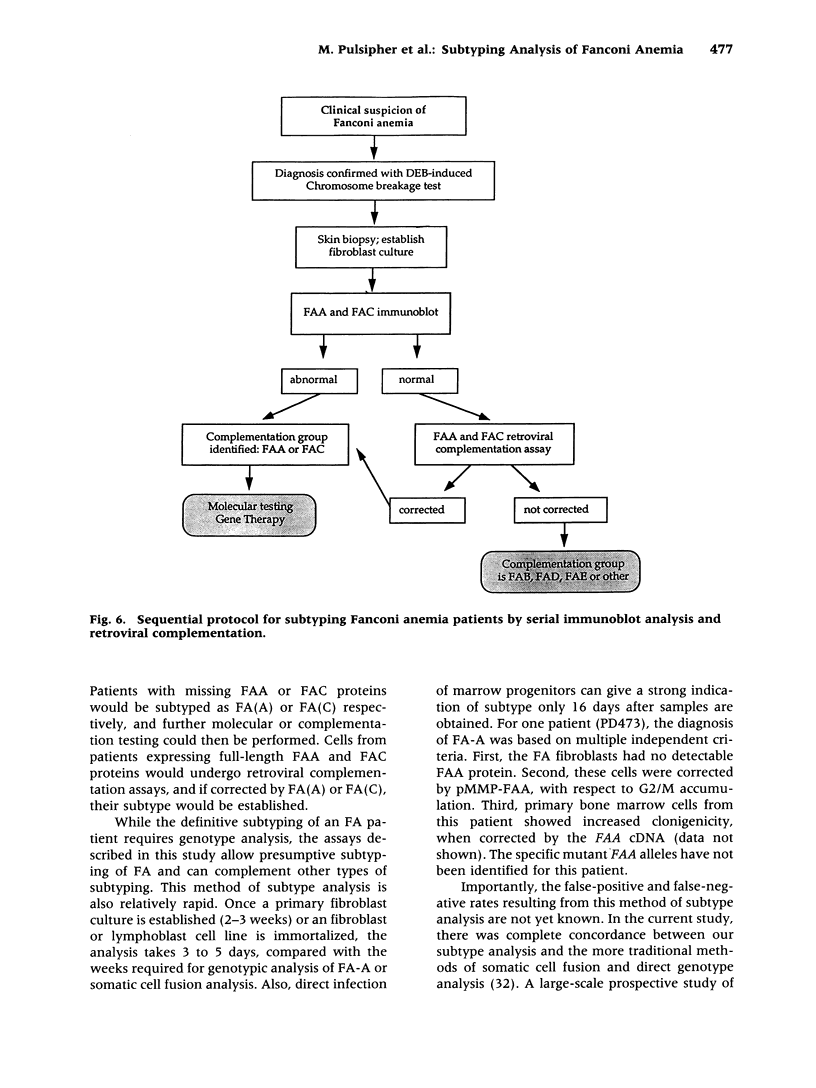
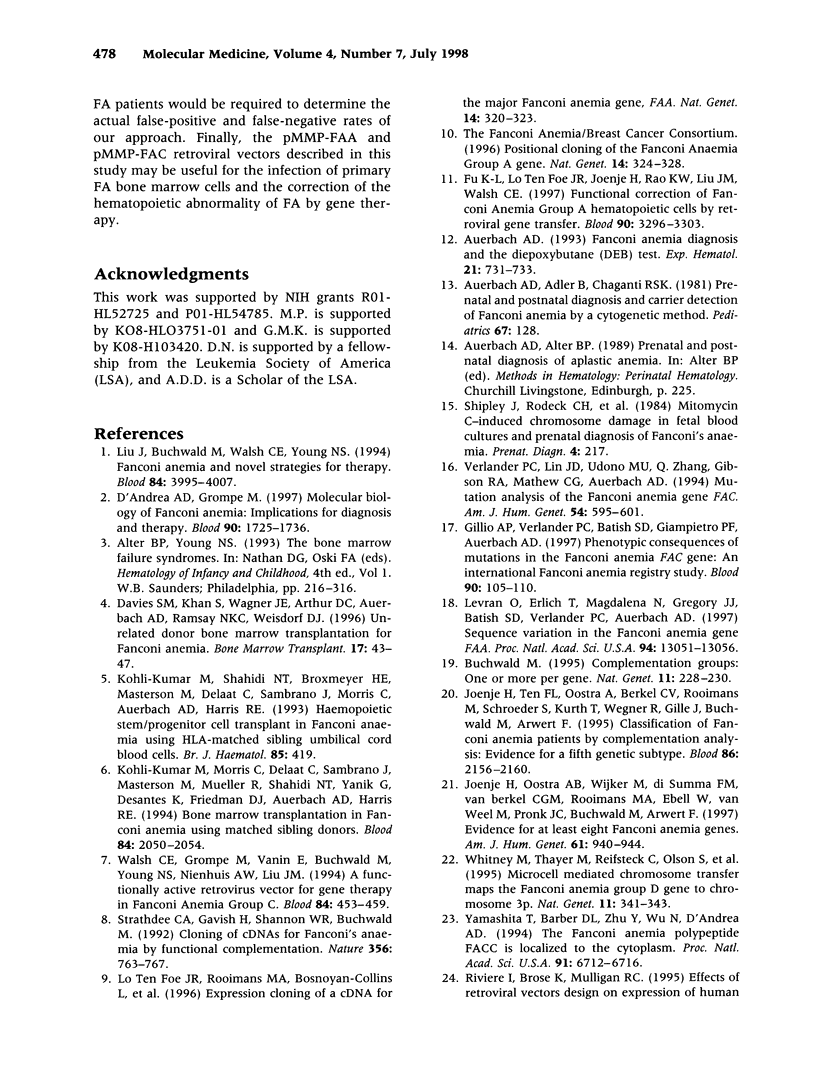
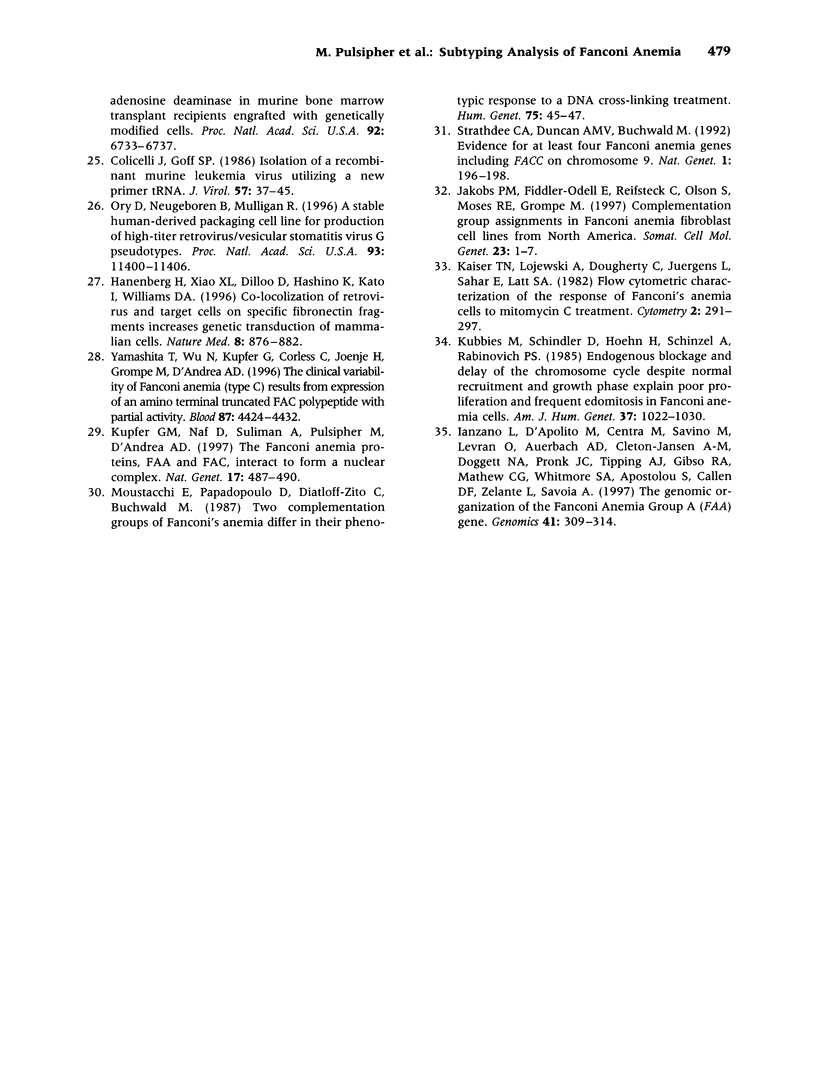
Images in this article
Selected References
These references are in PubMed. This may not be the complete list of references from this article.
- Auerbach A. D., Adler B., Chaganti R. S. Prenatal and postnatal diagnosis and carrier detection of Fanconi anemia by a cytogenetic method. Pediatrics. 1981 Jan;67(1):128–135. [PubMed] [Google Scholar]
- Auerbach A. D. Fanconi anemia diagnosis and the diepoxybutane (DEB) test. Exp Hematol. 1993 Jun;21(6):731–733. [PubMed] [Google Scholar]
- Buchwald M. Complementation groups: one or more per gene? Nat Genet. 1995 Nov;11(3):228–230. doi: 10.1038/ng1195-228. [DOI] [PubMed] [Google Scholar]
- Colicelli J., Goff S. P. Isolation of a recombinant murine leukemia virus utilizing a new primer tRNA. J Virol. 1986 Jan;57(1):37–45. doi: 10.1128/jvi.57.1.37-45.1986. [DOI] [PMC free article] [PubMed] [Google Scholar]
- D'Andrea A. D., Grompe M. Molecular biology of Fanconi anemia: implications for diagnosis and therapy. Blood. 1997 Sep 1;90(5):1725–1736. [PubMed] [Google Scholar]
- Davies S. M., Khan S., Wagner J. E., Arthur D. C., Auerbach A. D., Ramsay N. K., Weisdorf D. J. Unrelated donor bone marrow transplantation for Fanconi anemia. Bone Marrow Transplant. 1996 Jan;17(1):43–47. [PubMed] [Google Scholar]
- Fu K. L., Foe J. R., Joenje H., Rao K. W., Liu J. M., Walsh C. E. Functional correction of Fanconi anemia group A hematopoietic cells by retroviral gene transfer. Blood. 1997 Nov 1;90(9):3296–3303. [PubMed] [Google Scholar]
- Gillio A. P., Verlander P. C., Batish S. D., Giampietro P. F., Auerbach A. D. Phenotypic consequences of mutations in the Fanconi anemia FAC gene: an International Fanconi Anemia Registry study. Blood. 1997 Jul 1;90(1):105–110. [PubMed] [Google Scholar]
- Hanenberg H., Xiao X. L., Dilloo D., Hashino K., Kato I., Williams D. A. Colocalization of retrovirus and target cells on specific fibronectin fragments increases genetic transduction of mammalian cells. Nat Med. 1996 Aug;2(8):876–882. doi: 10.1038/nm0896-876. [DOI] [PubMed] [Google Scholar]
- Ianzano L., D'Apolito M., Centra M., Savino M., Levran O., Auerbach A. D., Cleton-Jansen A. M., Doggett N. A., Pronk J. C., Tipping A. J. The genomic organization of the Fanconi anemia group A (FAA) gene. Genomics. 1997 May 1;41(3):309–314. doi: 10.1006/geno.1997.4675. [DOI] [PubMed] [Google Scholar]
- Jakobs P. M., Fiddler-Odell E., Reifsteck C., Olson S., Moses R. E., Grompe M. Complementation group assignments in Fanconi anemia fibroblast cell lines from North America. Somat Cell Mol Genet. 1997 Jan;23(1):1–7. doi: 10.1007/BF02679950. [DOI] [PubMed] [Google Scholar]
- Joenje H., Lo ten Foe J. R., Oostra A. B., van Berkel C. G., Rooimans M. A., Schroeder-Kurth T., Wegner R. D., Gille J. J., Buchwald M., Arwert F. Classification of Fanconi anemia patients by complementation analysis: evidence for a fifth genetic subtype. Blood. 1995 Sep 15;86(6):2156–2160. [PubMed] [Google Scholar]
- Joenje H., Oostra A. B., Wijker M., di Summa F. M., van Berkel C. G., Rooimans M. A., Ebell W., van Weel M., Pronk J. C., Buchwald M. Evidence for at least eight Fanconi anemia genes. Am J Hum Genet. 1997 Oct;61(4):940–944. doi: 10.1086/514881. [DOI] [PMC free article] [PubMed] [Google Scholar]
- Kaiser T. N., Lojewski A., Dougherty C., Juergens L., Sahar E., Latt S. A. Flow cytometric characterization of the response of Fanconi's anemia cells to mitomycin C treatment. Cytometry. 1982 Mar;2(5):291–297. doi: 10.1002/cyto.990020505. [DOI] [PubMed] [Google Scholar]
- Kohli-Kumar M., Morris C., DeLaat C., Sambrano J., Masterson M., Mueller R., Shahidi N. T., Yanik G., Desantes K., Friedman D. J. Bone marrow transplantation in Fanconi anemia using matched sibling donors. Blood. 1994 Sep 15;84(6):2050–2054. [PubMed] [Google Scholar]
- Kohli-Kumar M., Shahidi N. T., Broxmeyer H. E., Masterson M., Delaat C., Sambrano J., Morris C., Auerbach A. D., Harris R. E. Haemopoietic stem/progenitor cell transplant in Fanconi anaemia using HLA-matched sibling umbilical cord blood cells. Br J Haematol. 1993 Oct;85(2):419–422. doi: 10.1111/j.1365-2141.1993.tb03192.x. [DOI] [PubMed] [Google Scholar]
- Kubbies M., Schindler D., Hoehn H., Schinzel A., Rabinovitch P. S. Endogenous blockage and delay of the chromosome cycle despite normal recruitment and growth phase explain poor proliferation and frequent edomitosis in Fanconi anemia cells. Am J Hum Genet. 1985 Sep;37(5):1022–1030. [PMC free article] [PubMed] [Google Scholar]
- Kupfer G. M., Näf D., Suliman A., Pulsipher M., D'Andrea A. D. The Fanconi anaemia proteins, FAA and FAC, interact to form a nuclear complex. Nat Genet. 1997 Dec;17(4):487–490. doi: 10.1038/ng1297-487. [DOI] [PubMed] [Google Scholar]
- Levran O., Erlich T., Magdalena N., Gregory J. J., Batish S. D., Verlander P. C., Auerbach A. D. Sequence variation in the Fanconi anemia gene FAA. Proc Natl Acad Sci U S A. 1997 Nov 25;94(24):13051–13056. doi: 10.1073/pnas.94.24.13051. [DOI] [PMC free article] [PubMed] [Google Scholar]
- Liu J. M., Buchwald M., Walsh C. E., Young N. S. Fanconi anemia and novel strategies for therapy. Blood. 1994 Dec 15;84(12):3995–4007. [PubMed] [Google Scholar]
- Lo Ten Foe J. R., Rooimans M. A., Bosnoyan-Collins L., Alon N., Wijker M., Parker L., Lightfoot J., Carreau M., Callen D. F., Savoia A. Expression cloning of a cDNA for the major Fanconi anaemia gene, FAA. Nat Genet. 1996 Nov;14(3):320–323. doi: 10.1038/ng1196-320. [DOI] [PubMed] [Google Scholar]
- Moustacchi E., Papadopoulo D., Diatloff-Zito C., Buchwald M. Two complementation groups of Fanconi's anemia differ in their phenotypic response to a DNA-crosslinking treatment. Hum Genet. 1987 Jan;75(1):45–47. doi: 10.1007/BF00273837. [DOI] [PubMed] [Google Scholar]
- Ory D. S., Neugeboren B. A., Mulligan R. C. A stable human-derived packaging cell line for production of high titer retrovirus/vesicular stomatitis virus G pseudotypes. Proc Natl Acad Sci U S A. 1996 Oct 15;93(21):11400–11406. doi: 10.1073/pnas.93.21.11400. [DOI] [PMC free article] [PubMed] [Google Scholar]
- Shipley J., Rodeck C. H., Garrett C., Galbraith J., Giannelli F. Mitomycin C induced chromosome damage in fetal blood cultures and prenatal diagnosis of Fanconi's anaemia. Prenat Diagn. 1984 May-Jun;4(3):217–221. doi: 10.1002/pd.1970040310. [DOI] [PubMed] [Google Scholar]
- Strathdee C. A., Duncan A. M., Buchwald M. Evidence for at least four Fanconi anaemia genes including FACC on chromosome 9. Nat Genet. 1992 Jun;1(3):196–198. doi: 10.1038/ng0692-196. [DOI] [PubMed] [Google Scholar]
- Strathdee C. A., Gavish H., Shannon W. R., Buchwald M. Cloning of cDNAs for Fanconi's anaemia by functional complementation. Nature. 1992 Apr 30;356(6372):763–767. doi: 10.1038/356763a0. [DOI] [PubMed] [Google Scholar]
- Verlander P. C., Lin J. D., Udono M. U., Zhang Q., Gibson R. A., Mathew C. G., Auerbach A. D. Mutation analysis of the Fanconi anemia gene FACC. Am J Hum Genet. 1994 Apr;54(4):595–601. [PMC free article] [PubMed] [Google Scholar]
- Walsh C. E., Grompe M., Vanin E., Buchwald M., Young N. S., Nienhuis A. W., Liu J. M. A functionally active retrovirus vector for gene therapy in Fanconi anemia group C. Blood. 1994 Jul 15;84(2):453–459. [PubMed] [Google Scholar]
- Whitney M., Thayer M., Reifsteck C., Olson S., Smith L., Jakobs P. M., Leach R., Naylor S., Joenje H., Grompe M. Microcell mediated chromosome transfer maps the Fanconi anaemia group D gene to chromosome 3p. Nat Genet. 1995 Nov;11(3):341–343. doi: 10.1038/ng1195-341. [DOI] [PubMed] [Google Scholar]
- Yamashita T., Barber D. L., Zhu Y., Wu N., D'Andrea A. D. The Fanconi anemia polypeptide FACC is localized to the cytoplasm. Proc Natl Acad Sci U S A. 1994 Jul 5;91(14):6712–6716. doi: 10.1073/pnas.91.14.6712. [DOI] [PMC free article] [PubMed] [Google Scholar]
- Yamashita T., Wu N., Kupfer G., Corless C., Joenje H., Grompe M., D'Andrea A. D. Clinical variability of Fanconi anemia (type C) results from expression of an amino terminal truncated Fanconi anemia complementation group C polypeptide with partial activity. Blood. 1996 May 15;87(10):4424–4432. [PubMed] [Google Scholar]



